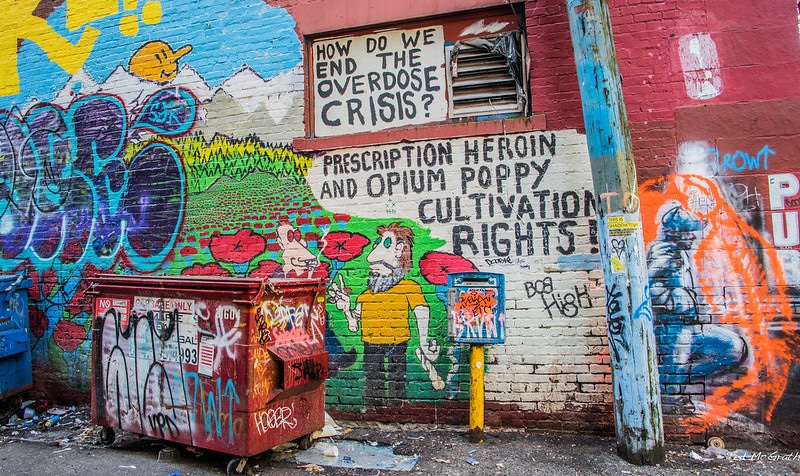Despite efforts to make medical safe supply programs in Canada as low-barrier as possible, they still require most participants to make daily trips into the clinic or a pharmacy to pick up their prescriptions, and consume them under supervision. Now, Vancouver’s PHS Community Services Society has launched a new Enhanced Access (EA) program that allows participants to purchase their prescriptions and take them home.
Available safe supply prescriptions include both injectable and smokable fentanyl, as well as hydromorphone. The EA options also include medications for opioid use disorder like oral methadone and injectable Sublocade.
They purchase their prescription from PHS’s onsite pharmacy. Each substance is priced equivalent to its street value, so that patients are paying about the same amount they would be if purchasing it without a prescription. Essentially, it’s the same process as purchasing a prescription for any other drug at any other pharmacy.
“The patient decides what that dose is for them. There is no maximum dose for the program,” PHS medical director Christy Sutherland told Filter. “It’s a natural extension to our existing programming.”
The EA program began April 7. Only one patient is using it so far, but several others are currently undergoing the intake process.
In PHS’ original safe supply program, patients go through intake and titration processes observed by facility staff. Over the course of a few days, they increase their dosage under supervision so that staff can get a sense of their tolerance and help determine the best therapeutic dose. The EA program is designed for patients who have already stabilized on safe supply through that process.
If patients pay for the drugs themselves, they can decide when to pick up and how often.
Patients can still opt for the on-site model, in which case the program can cover the costs of their prescription. If they opt for the EA program and pay for the drugs themselves, they can decide when to pick up and how often.
“A lot of patients I have who have stabilized on our program and are working, [they] can’t come in for all of these observed doses anymore,” Sutherland said. “We can create a pickup schedule and dosing scheduling that works for them, for them to stay at work and still be able to access the medication.”
Patients can also switch between the two models as needed.
PHS is a nonprofit and doesn’t receive any extra money from the program, nor does it use federal or provincial tax dollars to fund it. But the program is completely legal, and is currently being evaluated by PHS’ partners at the British Columbia Centre on Substance Use.
Sutherland hopes to see similar programs roll out elsewhere, and that they can be a step toward ending the drug war. “I hope that this program kind of contributes to that dialogue,” she said, “and provides safety for people involved.”
Photograph by Ted McGrath via Flickr/Creative Commons 2.0





Show Comments